Icons of Gävle
LINNEA STRID – A self-made artist
Linnea Strid is a selfmade artist from Gävle with numerous solo exhibitions all over the world. An extremely positive encounter, that came as a bit of surprise as her painted realism often is sad and melancholic. But with 155K followers on Instagram and an indescribable talent it’s no wonder Linnea is also smiling. If you haven’t experienced her art yet, hurry up! But first, let us get to know more about her.
Fico: We will start this with an “easy” question. How do you decide to become an artist?
Linnea: Well, I sat down and thought, what can I do that will give me the smallest amount of money and is one of the hardest careers a person can choose?
All “jokes” set aside; it has been a decision since I was very young. It was clear already from a young age that I should take this path. My parents were very supportive already from the start and I thought it was so fun to paint, it became an obsession from early age. I didn´t have any other hobbies, I wasn´t interested of horses or other things. My interest was to paint already from the age of 2.
When I started school, I got massive acknowledgment from the teachers and as I grow older my classmates begun to ask me to do paintings of for example: their brother or their dog. I made all the paintings for free, so that I would be popular in school. The painting became my persona. So, it was easy for me at a young naive age, to decide that this is what I will do with my life.
F: You and your family moved to Spain when you were a teenager, has that changed your artistic style or was it there it was born?
L: No, my realism has always been with me and it´s the style I feel I have creative control in. In Spain, I had a boyfriend that painted abstracts and he thought that I absolutely should try it. I did, but it was really a no go. It didn´t feel right and I had no creative flow at all when I tried the abstract style.
But I did my first exhibition in Spain. There were many galleries in the South of Spain at that time and they had a great mind set. They didn’t care that I was 16, if they thought that I had talent they were eager to put my paintings on their walls.

Jacket: Our Legacy, Shirt: Our Legacy, Denim: Filippa K, Shoes: Blankens
F: How long did you live in Spain?
L: After I graduated, I wanted to study art and this wasn’t possible were we lived in Spain. And as I also felt that I was about to lose my native language, I decided at the age of 19 to move back to Sweden and Gävle. Where I started to study at Gävle Konstskola.
Missing a part of my soul
F: Gävle Konstskola is a broad art education with a goal to prepare students for more higher learning, did you continue to study art afterwards?
L: Actually, I applied several times to different art Universities, but I was refused every time. So, it made me lose my confidence about my talent. I thought that if I can´t get in, I must be really bad, and I have been fooling myself all along about the quality of my art.
So I moved to Uppsala to study language instead. As I spoke Spanish fluid, my plan was to study to become a translator or interpreter. But after a long period of hard studies were I didn´t have any time to do anything else, my life felt poor and pointless. It was like I was missing a part of my soul when I didn´t paint. I asked myself, is this how I want it to be for the rest of my life? As you understand the answer was no, and I decided to go for my dream and become a full-time artist, no matter that they refused me at the University. I had some savings, so I knew that even if I wouldn´t sell any paintings the first year, I would survive.
F: Do you have any pointers for persons that are thinking about trying their wings as a full-time artist?
L: It´s hard to say, as the world doesn’t look the way it did when I made my decision. But I can say that visibility is the key, to show your art for as many people as possible. In the beginning I approached every place that I could think of to show my art. I have had exhibitions in several places where absolutely no one cared about my art.
I would also recommend to not charge to much for the art from the beginning. Because if the prices are too high and you don´t sell anything, then you are screwed. It´s important that you start selling pieces from the beginning. So that your art becomes visible in even more places.
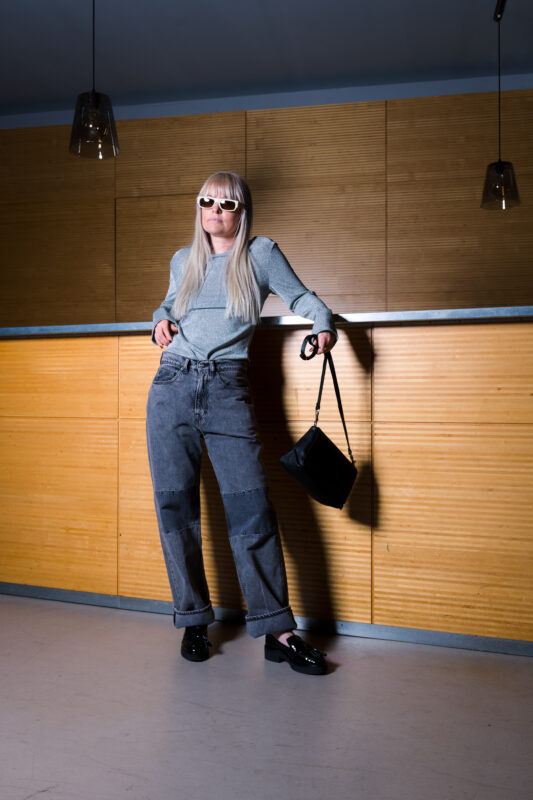
Dress/Top: Samsoe Samsoe, Denim: Our Legacy, Bag; Tiger of Sweden, Shades: A.Kjaerbede
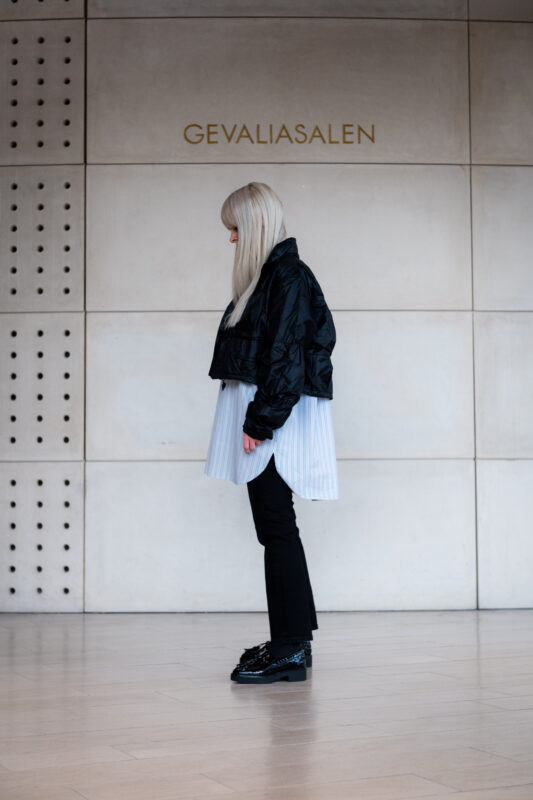
Jacket: Our Legacy, Shirt: Our Legacy, Denim: Filippa K, Shoes: Blankens
F: You have had representation in USA. How do you get a gallery in LA to represent and show your art?
L: Well, I really don´t know. But at the time I dropped out of the University in Uppsala, social media started to become really big. It wasn´t Instagram or Facebook that did the trick for me from the beginning, it was Flickr. The response I got was massive and people from all around the world started to like and buy my art. So, the gallery must have seen my art there. We never talked about how they knew about me. From the beginning I thought that they only offered me a possibility to show my art at their gallery. But they represented me for 6 years in the States and with them I had at least 1 solo exhibition and 20 group exhibition per year. They pushed me to produce more and more paintings, it came to a point where I felt like a factory. So, after six years I couldn´t keep up anymore. The gallery did a great job, and we had a great productive cooperation. But I wanted to be a free spirit again, so we went separate ways.
As a rock star?
F: Your pieces have been showed in different exhibitions over many parts of the world, both as solo and in group exhibitions. Are you always attending? In other words, do you travel around the world visiting different vernissages as a rockstar?
L: Haha, not anymore. My situation in life can´t fit me going around the world drinking cocktails and talking about my art. But when I was younger and without commitments, I went to the States 6 times a year to attend different exhibitions. So, during that time you could say that I had some star quality 🙂
F: About vernissage, how do you act? Are you a finely tuned salesperson or a shy cocktail drinker? Or do you stand in the corner dressed in black, looking arty and difficult?
L: You know, I´m typical Swedish and I´m not a salesperson. As a Swede you don´t go up to people and tell them that I´m the artist and ask them what they think about the exhibition. I rather try to keep a low profile and if people want to talk to me, I’m very positive to meet new people. But I will not take the first step, you will more likely see me in the corner sipping on my Cosmo.
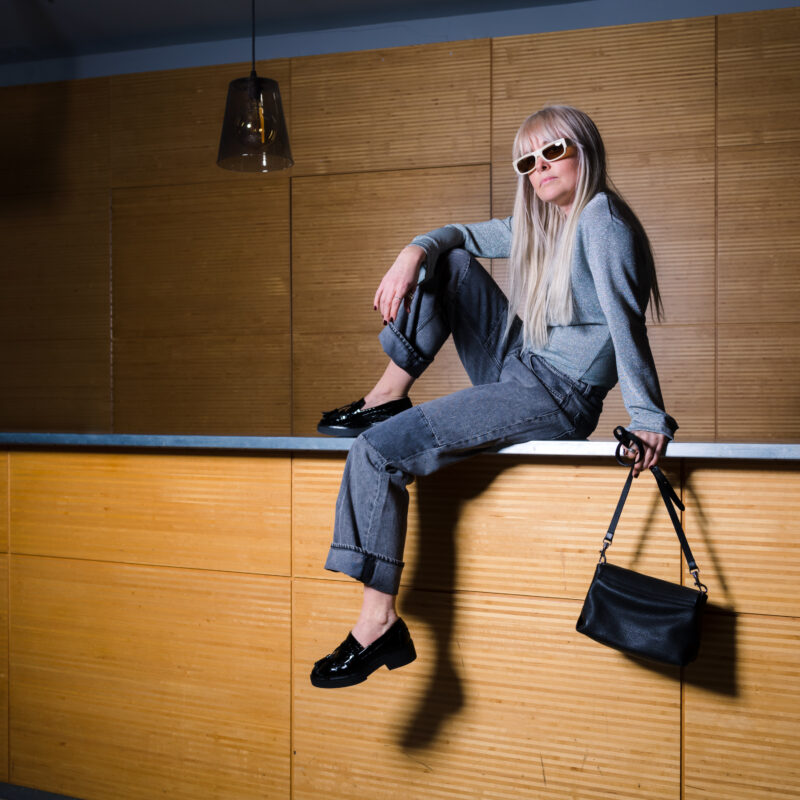
Dress/Top: Samsoe Samsoe, Denim: Our Legacy, Bag; Tiger of Sweden, Shades: A.Kjaerbede
The Swedes are arty-farty
F: How about culture differences between people in the art community in different countries? Are we right to presume that the Swedes are the most arty-farty?
L: Well, between the countries that I can have a real opinion about, the Spanish and the Americans are totally openminded to look for talent everywhere. If you are self-made that is almost better than if you have a long education. Because then you have your own unique style and you have succeeded by yourself. In Sweden it´s the opposite, here almost everything is about who you know and where you have studied. So, if you don´t have the right background you are often looked at as a nobody. It doesn´t matter how much success you have had, you will never fit in. So yes, the Swedes are the most arty-farty 🙂
F: When you succeed with your art, do you feel satisfaction, or do you feel that you need to produce more and better paintings?
L: Yes, I feel satisfaction when I sell a painting, the reward system kicks in immediately. The feeling is incredible when someone loves a piece so much, that they want to pay a big amount of money for something I have created with my own hands. But as soon as the high from the sale fades away, I start thinking about the future, with thoughts like: Is it possible to sell more paintings or was this sale just a coincidence? I need to be more creative and paint even better.
I’m always on the search for my masterpiece.
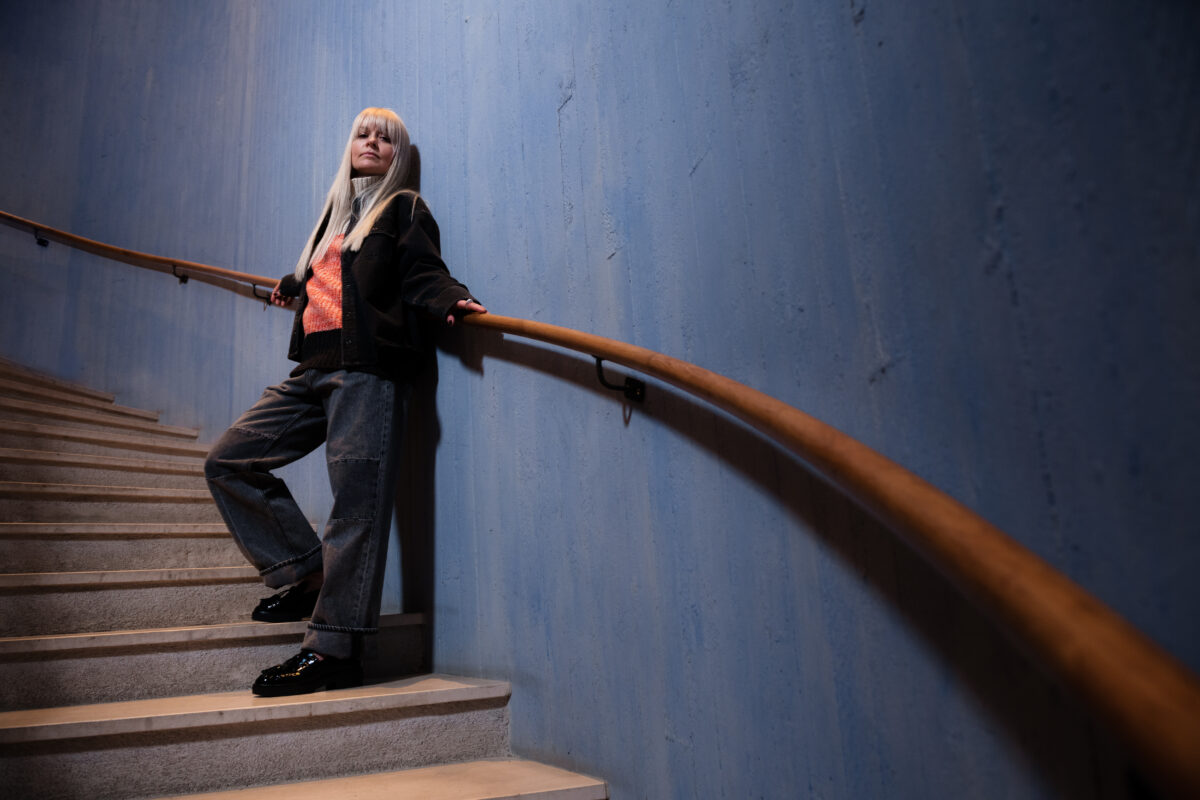
Jacket: Samsoe Samsoe, Knit: Adnym Atelier, Denim: Our Legacy, Shoes: Blankens
F: What do you hope your art will make people feel?
L: Actually, I don´t think about it at all. I only focus about how the piece makes me feel. I express my thoughts and feelings through my paintings. But of course, I hope that people can relate to the paintings. It’s very fulfilling when people contact me and tell me that they totally understand the feeling and the expression in a painting.
Harmony and happiness
F: What kind of feelings do you feel when you create?
L: Harmony and happiness. When I create I´m in my happy place, I could stay there forever. Almost all my paintings are about myself and when I paint its therapy for my soul.
F: Your pieces make you want to know more about the situation that takes place. It feels like there is more to tell. Do you create a narrative for every painting?
L: No, I don’t, but there can be more imbedded in the picture then that are showed. Often, I paint a feeling that I’m carrying inside, and that feeling comes from a certain situation that have happened. So, most of the times my realism is actual self experienced realism, I paint my life and how it makes me feel. But many times, I have no idea what the painting is about, the image just comes to me.
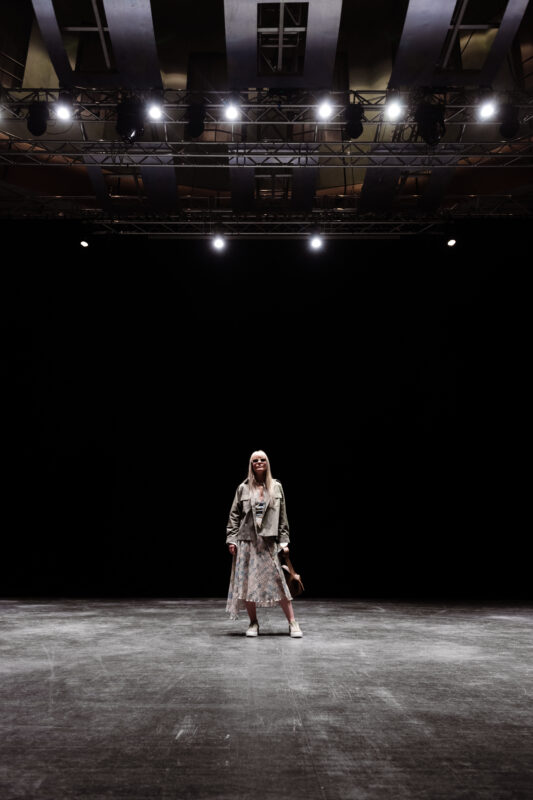
Jacket: Ahlvar Gallery, Dress: Acne Studios, Shoes: Eytys, Bag: Acne Studios, Shades: A.Kjaerbede
Water is a feeling for me
F: Many of your paintings includes water. What does water mean to you?
L: Water is a feeling for me, I love water. I couldn´t live in a place that didn’t have access to the sea, a lake, or a river. Water is also both life giving and life taking. We can´t live without it, but can also be scary and you need to have respect for it. So, you can always interpret water in different ways.
F: There is often a big part of sadness in your realism. Do you see the world through sad eyes?
L: I see myself as a happy person and I have never had any sort of depression. I´m always trying to turn negative things into something positive. But there are some negative things in my life that can´t be turned into positive. So, as I paint, like I mentioned before, it’s like therapy. So maybe I put all my sorrows on canvas and can therefore be a happy person in life.
F: Nice, we love that thought.
F: How does the future look like for Linnea Strid?
L: This year I’ll be preparing for a solo exhibition in Skutskär February 2024
F: Nice to hear, we will be there. To finish this off, we are dying to know who your all time favourite artists are?
L: Ohh, that is hard, as I have many. But these four I think are the strongest candidates: Anders Zorn, John Everett Millais, Frida Kahlo and John William Waterhouse.
F: You can definitely see some Linnea in those artist 🙂
If you want to experience Linneas art immediately, the easiest way is through IG: yourfavouritecolor
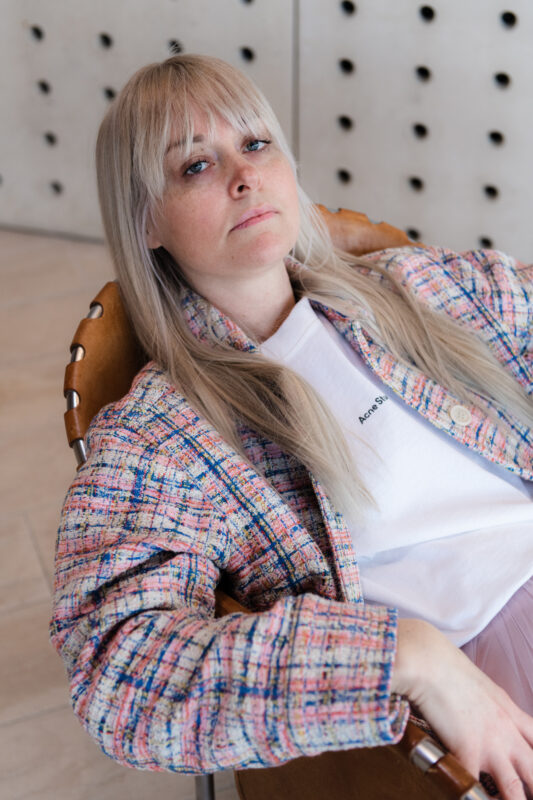
Jacket: Rodebjer, Tshirt: Acne Studios, Skirt: Ida Sjöstedt